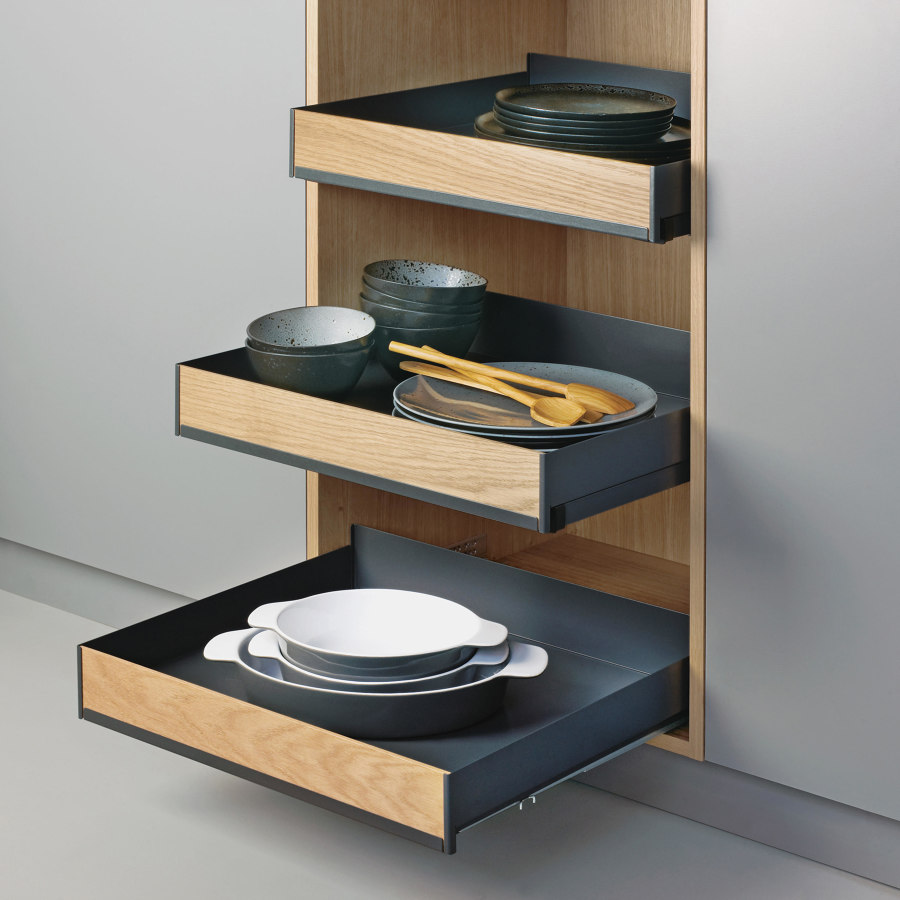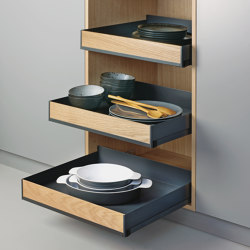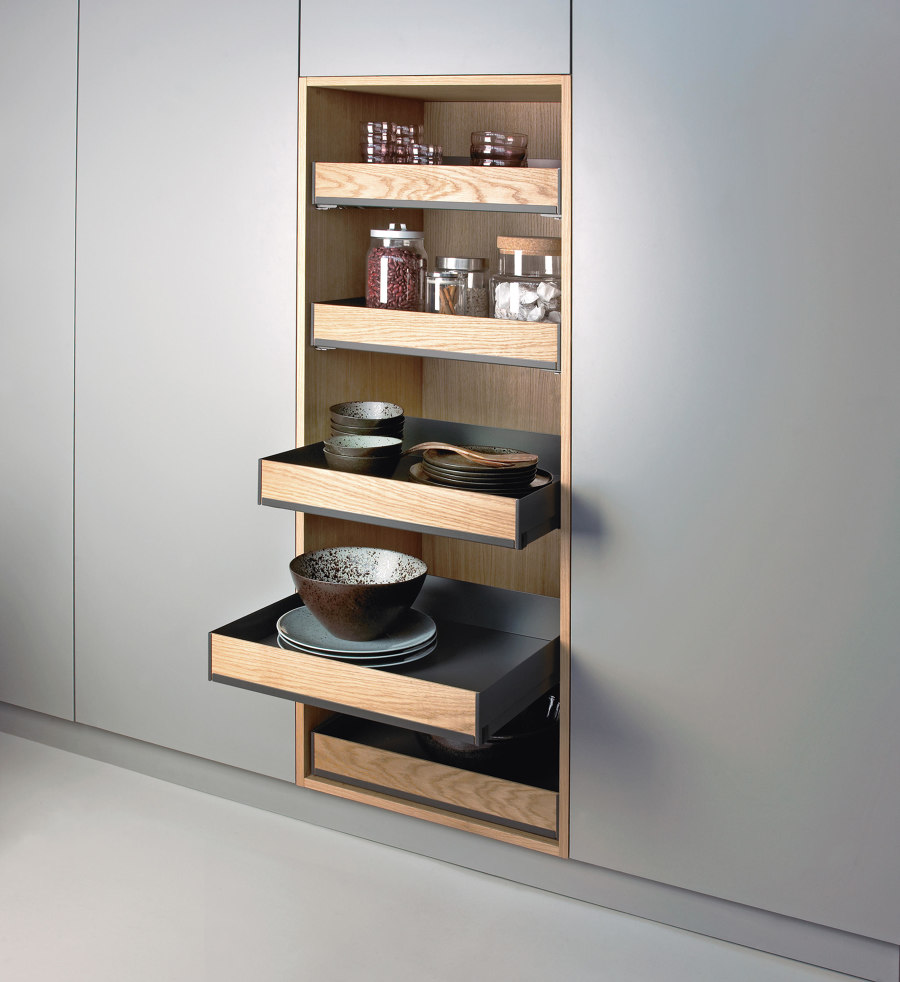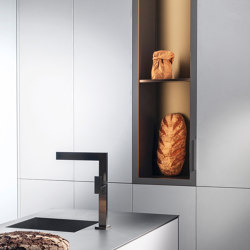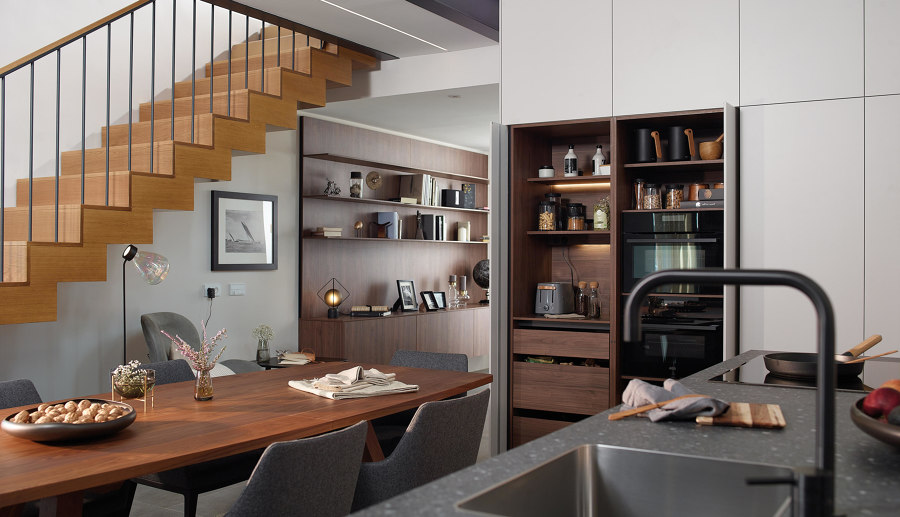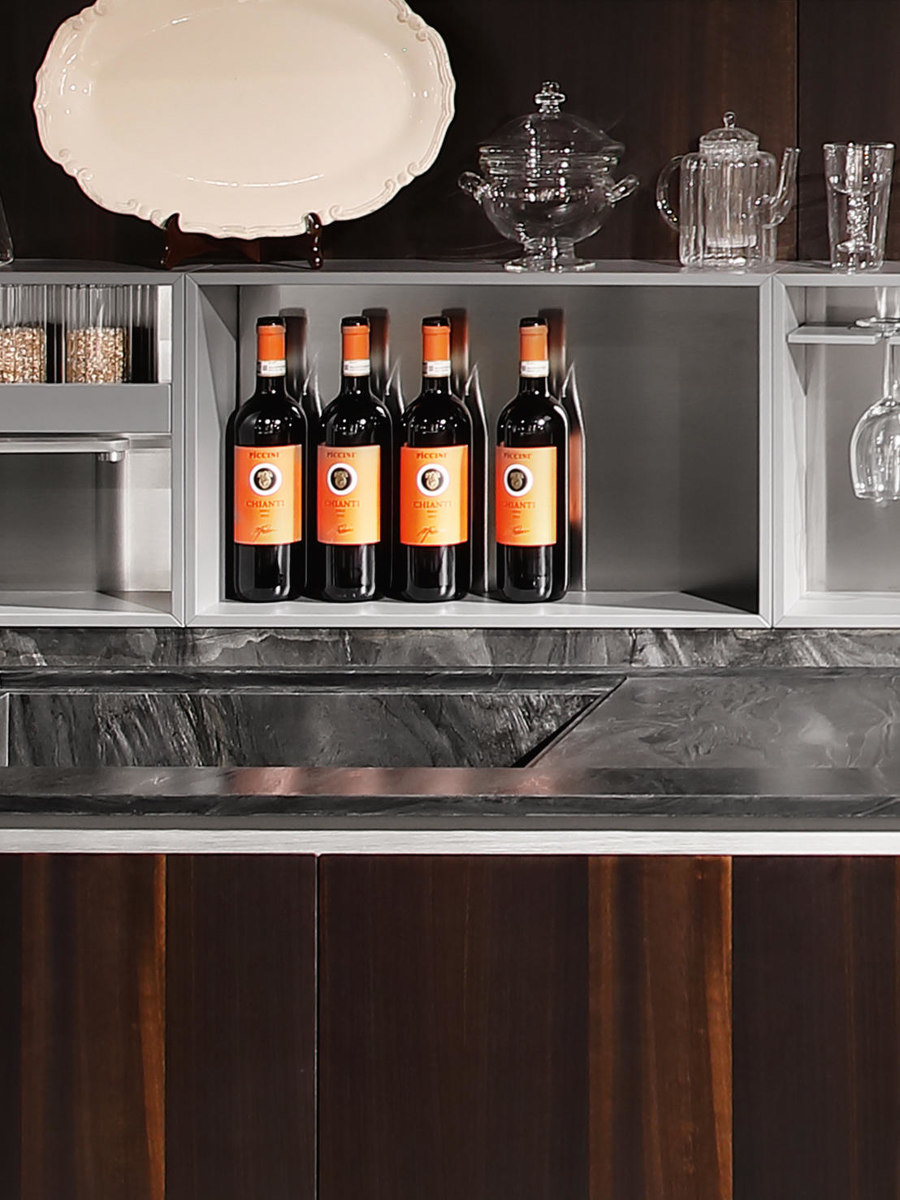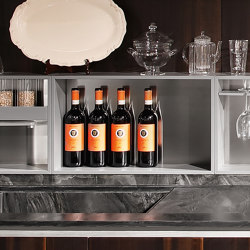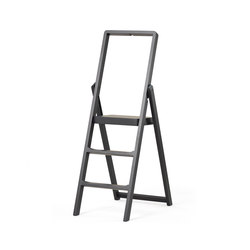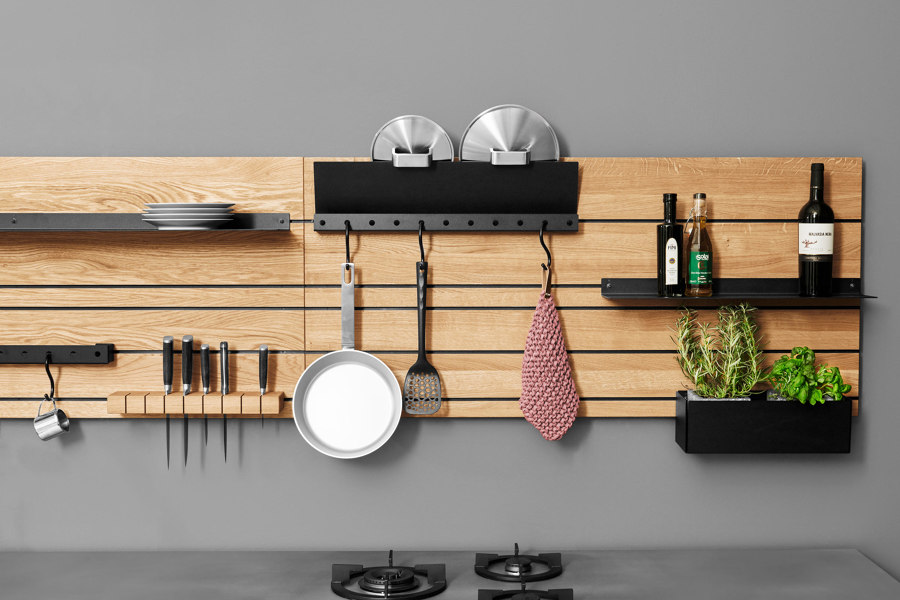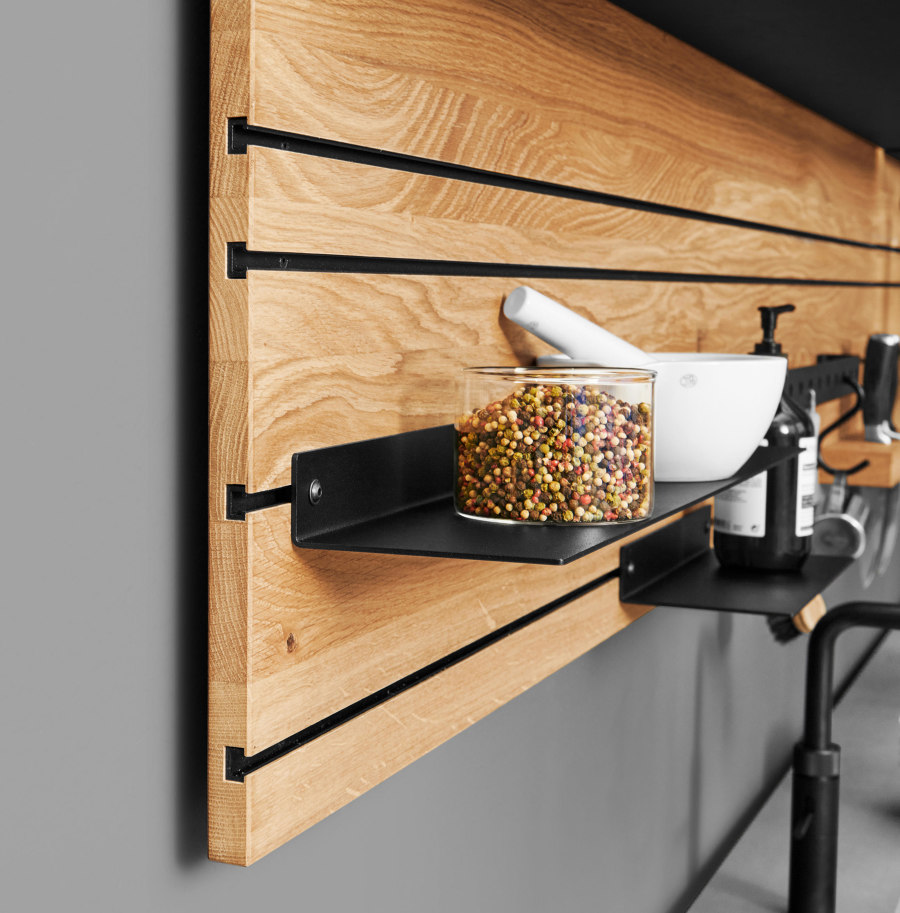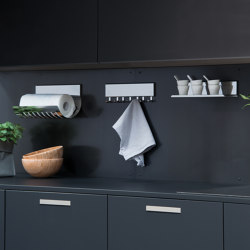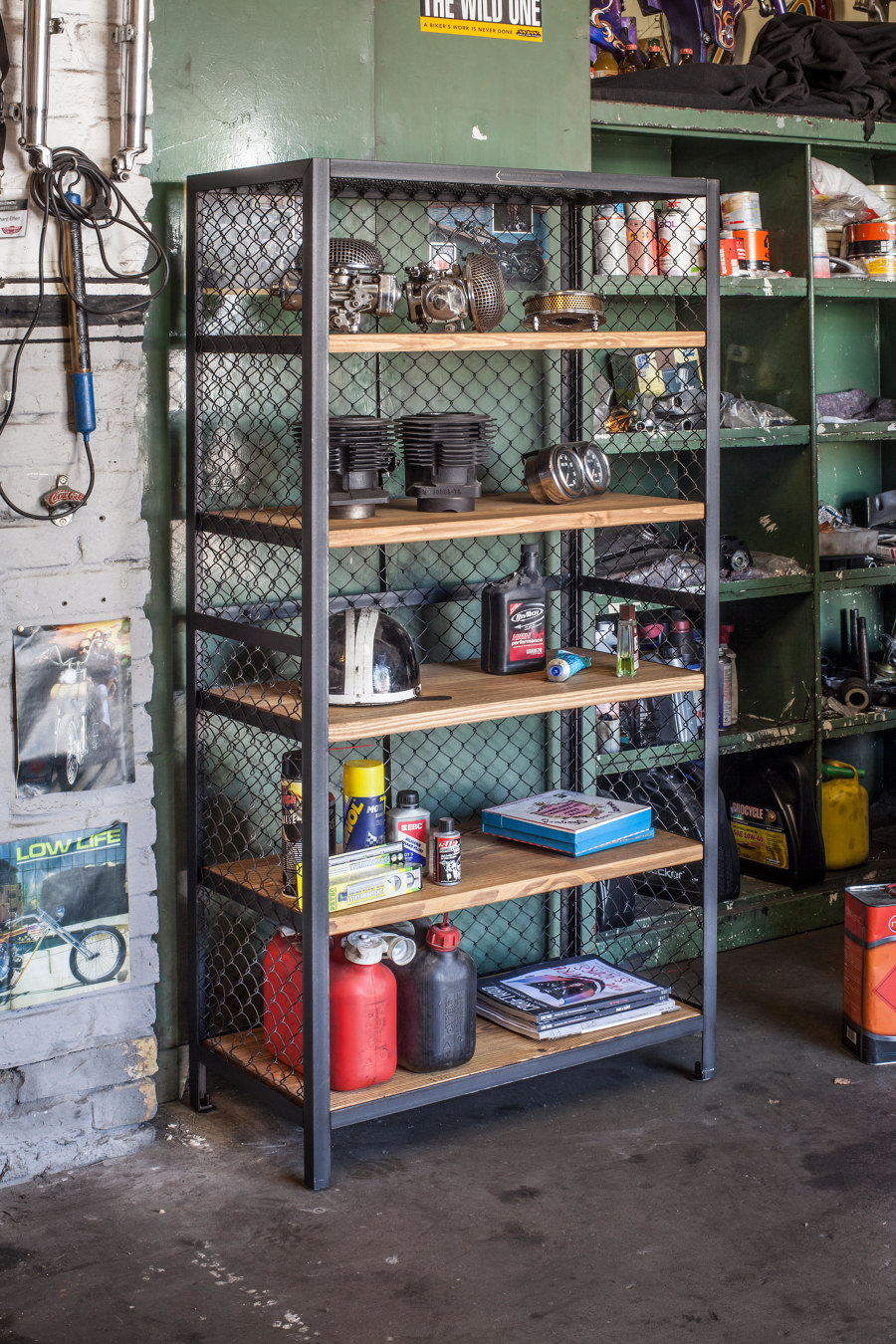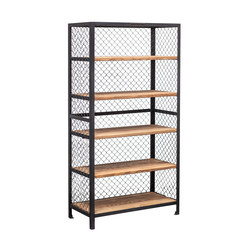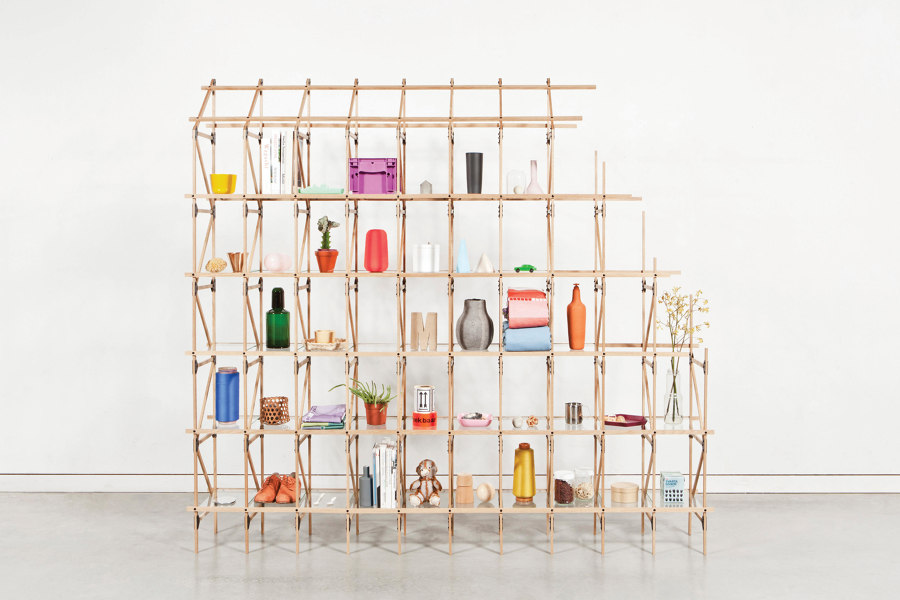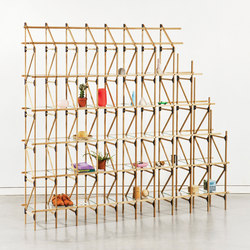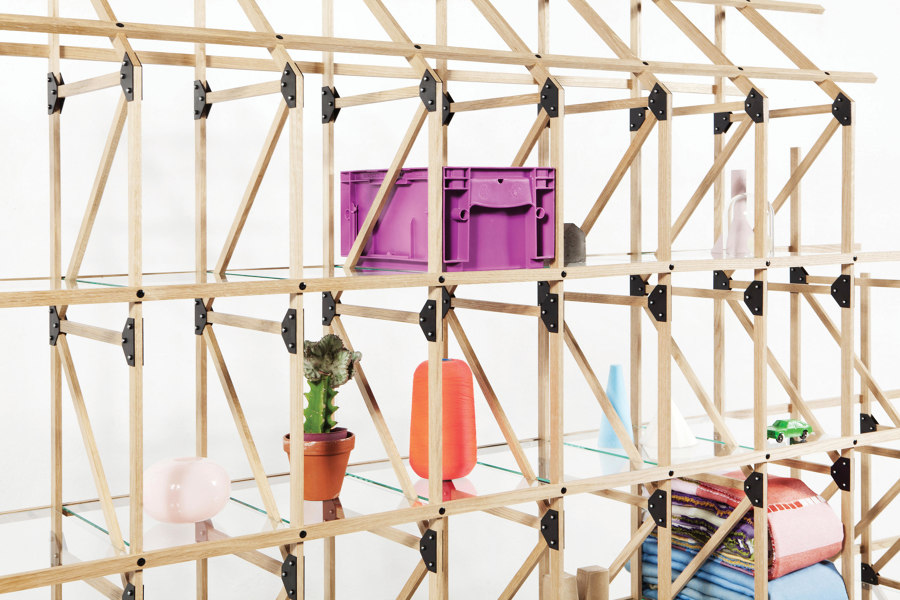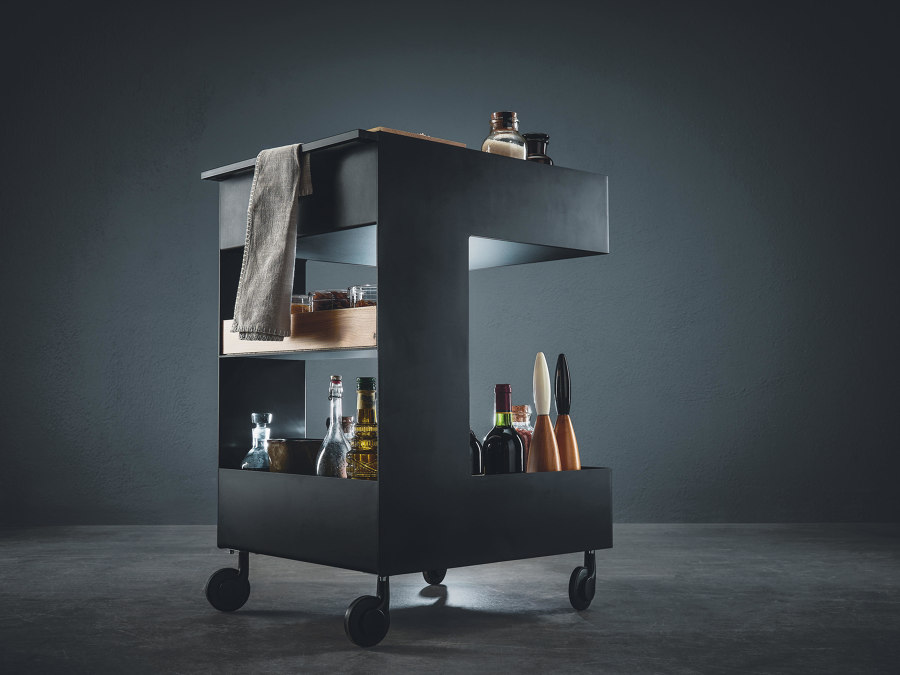Bring kitchens to life with open storage products
Texte par James Wormald
02.05.22
Making contemporary appliances, cookware, tableware and artisanal ingredients more visible and accessible, open kitchen storage puts an end to the kitchen design cover-up.
The TUUL kitchen board by Jan Cray houses stabilised storage typologies including shelving, hooks, knife blocks and containers in linear organisation
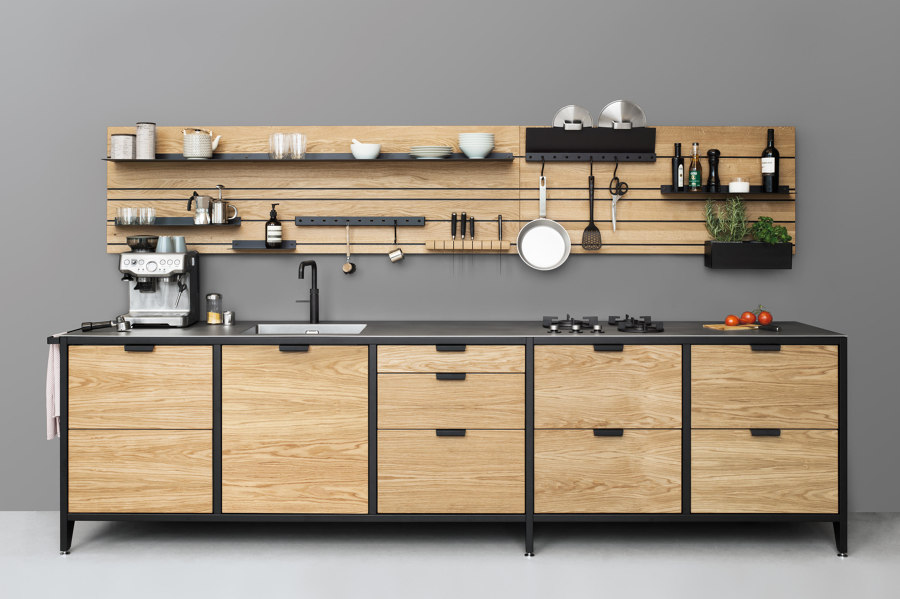
The TUUL kitchen board by Jan Cray houses stabilised storage typologies including shelving, hooks, knife blocks and containers in linear organisation
×Doors. As required for kitchen cabinetry as the front of a house, right? They’re almost as ubiquitous as the frame itself, and not without reason. Not only do they cover a multitude of untidy sins and bring a clean, minimalist look to the home’s most used storeroom with a gentle, soft close, they also protect their internal environment from the natural dirt and dust accumulation that affects other less-used household surfaces. There are, however, advantages to opening up the kitchen storage landscape that can be easy to miss.
Extendo pull-out shelves from peak-system (top, middle) keep the users’ favourite products on show, while Poggenpohl’s glass-fronted Showcase cabinet lights them up like a gallery sculpture (bottom)

Extendo pull-out shelves from peak-system (top, middle) keep the users’ favourite products on show, while Poggenpohl’s glass-fronted Showcase cabinet lights them up like a gallery sculpture (bottom)
×Idolise aesthetics
It seems such a waste to hide the aesthetic qualities of contemporary dinnerware, glassware and cookware behind closed cabinet doors. When the doors are removed, however, these hidden kitchen treasures become part of the decor, even when not in use.
The Extendo pull-out shelves from peka-system sit somewhere between open shelves and drawers. The open or partial fronts allow their decorative inhabitants to stay in constant view, remaining easily accessible. Glass-fronted cabinetry, meanwhile, such as the Showcase cabinet from Poggenpohl, both presents and protects its wares, housing anything from sculptural ceramic dishes and glass vases to artisanal foods.
Santos’s FINE storage cabinet with retractable doors (top), Rossana’s Free Uunder cabinet with storage aids (middle) and Design House Stockholm’s wall-hung Step stained step stool (bottom)
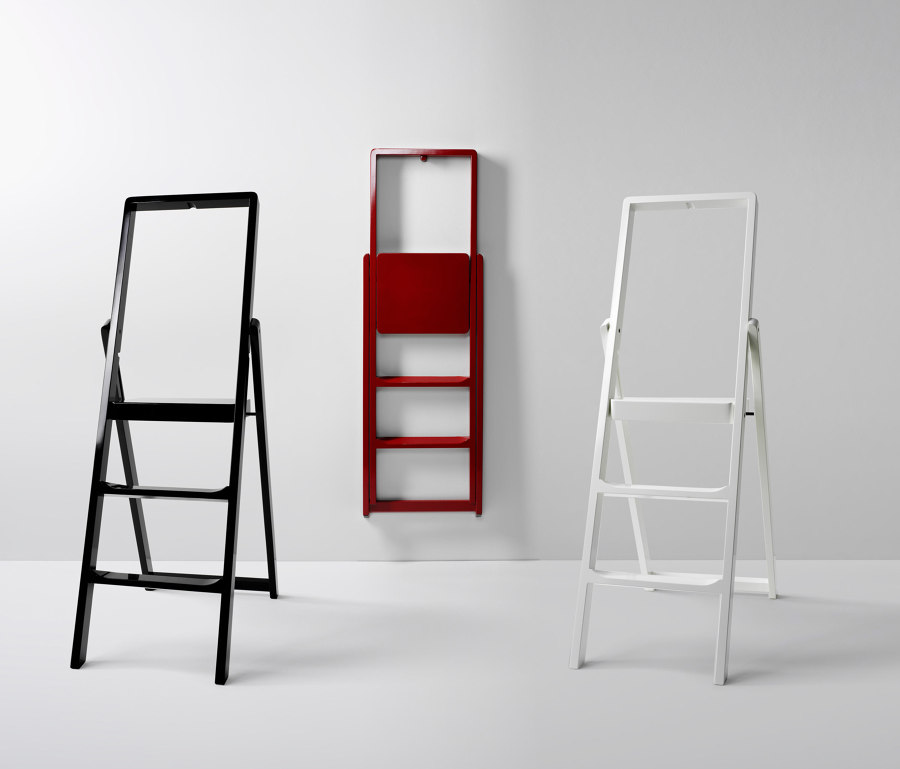
Santos’s FINE storage cabinet with retractable doors (top), Rossana’s Free Uunder cabinet with storage aids (middle) and Design House Stockholm’s wall-hung Step stained step stool (bottom)
×Easy access
Replacing doors with glass or removing them altogether looks good in the product catalogue, but when reality hits home it hits hard. I find it difficult enough to keep my accumulated desk crockery tidy, never mind an entire kitchen. For those of us less well house-trained, Santos manufactures a FINE range of cabinets featuring retractable doors, so users can attempt to keep them open, clean and tidy, but quietly keep them closed if they fail.
Replacing doors with glass or removing them altogether looks good in the product catalogue, but when reality hits home it hits hard
Permanently open cabinets such as the Free Uunder range from Rossana, meanwhile, can make it easier to keep a tidy kitchen with storage aids such as racks for glasses, jars and wine bottles. With no doors, the cabinets have no door swing, meaning they can fit directly above the worktop, for easier access.
Taller kitchen users, for whom high storage is far easier than low, may prefer to stack open cabinets up high, while for their more vertically-challenged co-habitants, the extra height is still usable and accessible via stepladders. The solid-oak Step stained ladder from Design House Stockholm, for example, is just 5cm deep when folded up, and comes with an oak hook to keep it in place.
The TUUL kitchen board components (top, middle) slide in and along its slim grooves, while Ronda Design’s magnetic Magnetika storage elements (bottom) can be repositioned anywhere on the metal panel
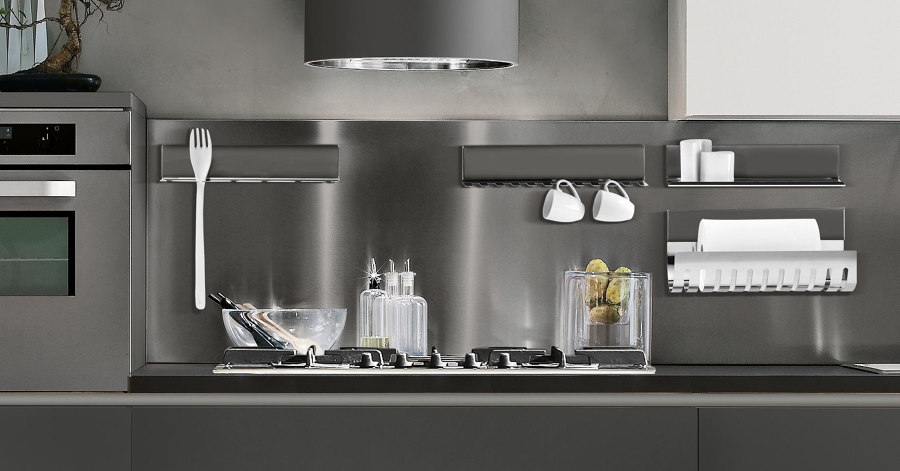
The TUUL kitchen board components (top, middle) slide in and along its slim grooves, while Ronda Design’s magnetic Magnetika storage elements (bottom) can be repositioned anywhere on the metal panel
×Use all your space
If worktop depth doesn’t allow the use of low-hung cabinetry, there are other ways to make use of that freed up wall space. The TUUL kitchen board by Jan Cray keeps slide-in powder-coated steel components in linear organisation, to hang utensils, hold knives secure and position shelving, while the Magnetika Kitchen series from Ronda Design provide similar storage options with a strong magnetic connection, ensuring the right implement can be positioned precisely where it’s needed.
Noodles Noodles & Noodles’ Multi Shelf Mesh shelving is shown here suited to garage and retail interiors, but the flexible nature of the sturdy shelves and mesh sides make it suitable for any purpose
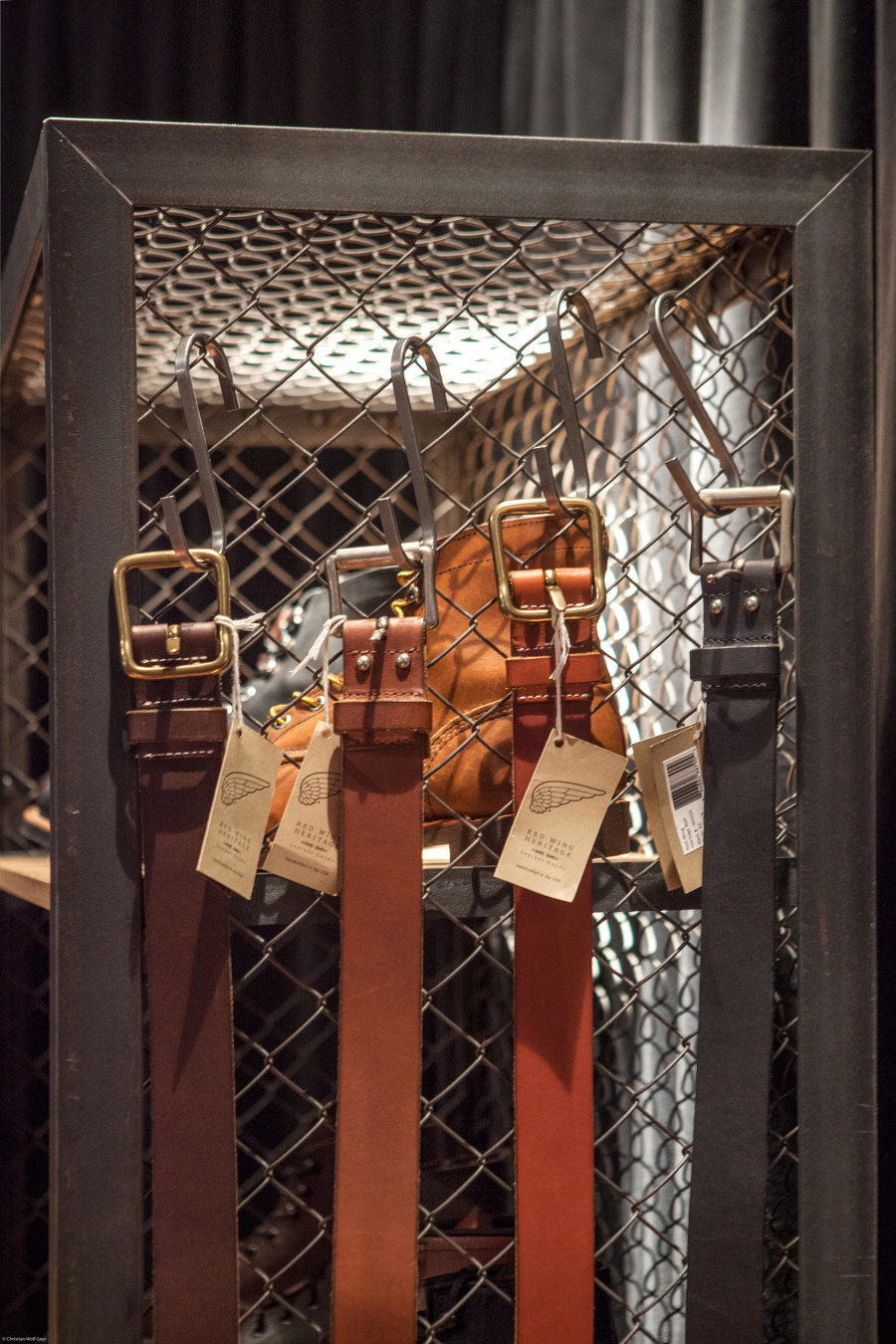
Noodles Noodles & Noodles’ Multi Shelf Mesh shelving is shown here suited to garage and retail interiors, but the flexible nature of the sturdy shelves and mesh sides make it suitable for any purpose
×An inspiration station
Out of sight, out of mind. When appliances, tools or ingredients are hidden away behind closed doors, it’s easy to forget they’re there. Meaning even that home-crafted jar of chutney will likely expire before it’s enjoyed. Restaurant designers understand that appetites expand with a glimpse of ingredients, often decorating walls with a library of sauces or natural produce. The open nature of bookcase furniture like Noodles Noodles & Noodles’s Multi Shelf Mesh shelves fill cooks with the energy of possibility, while the mesh sides can be useful for hanging additional objects.
Open-edged shelving units like Tuttobene’s Frameworks cabinet (top, middle) and Fiam Italia’s INORI unit (bottom) allow light and objects to pass through them, making them fit for partition storage
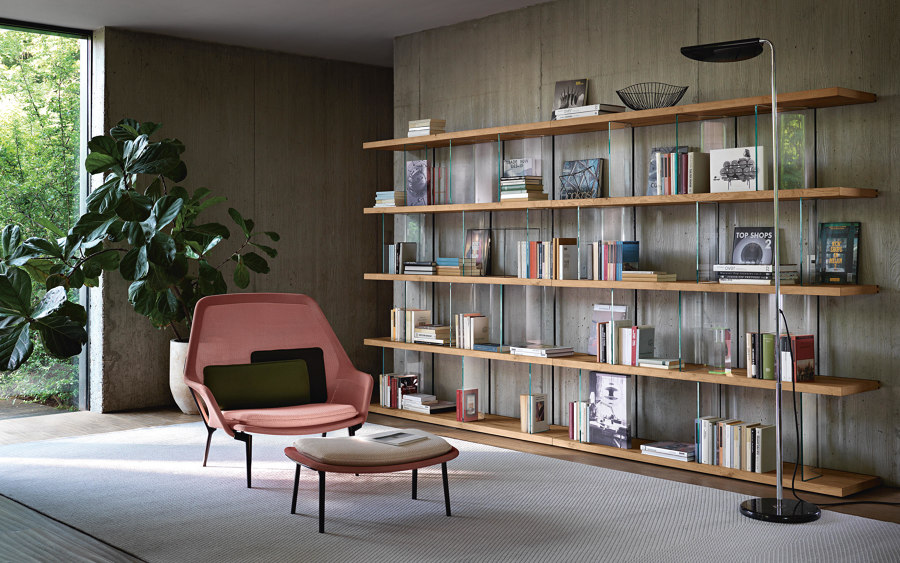
Open-edged shelving units like Tuttobene’s Frameworks cabinet (top, middle) and Fiam Italia’s INORI unit (bottom) allow light and objects to pass through them, making them fit for partition storage
×Accessible partition storage
Bookcase shelving with open sides and backs is perfectly suited for use as partitioning: breaking up space between cooking and dining zones in the open plan. Accessible from both sides, it’s easy to reposition tableware after cleaning, and remove it from the other side before eating. Tuttobene’s Frameworks storage uses scaffolding-like latticework to create a stable load-bearing construction, while Fiam Italia’s INORI shelving combines complementary solid wood and glass materials in a sleeker option.
next125’s next125 Trolley can be loaded up with the bare essentials for any mealtime typology and whisked away to wherever the party is. If kept empty, meanwhile, it makes light work of tidying up
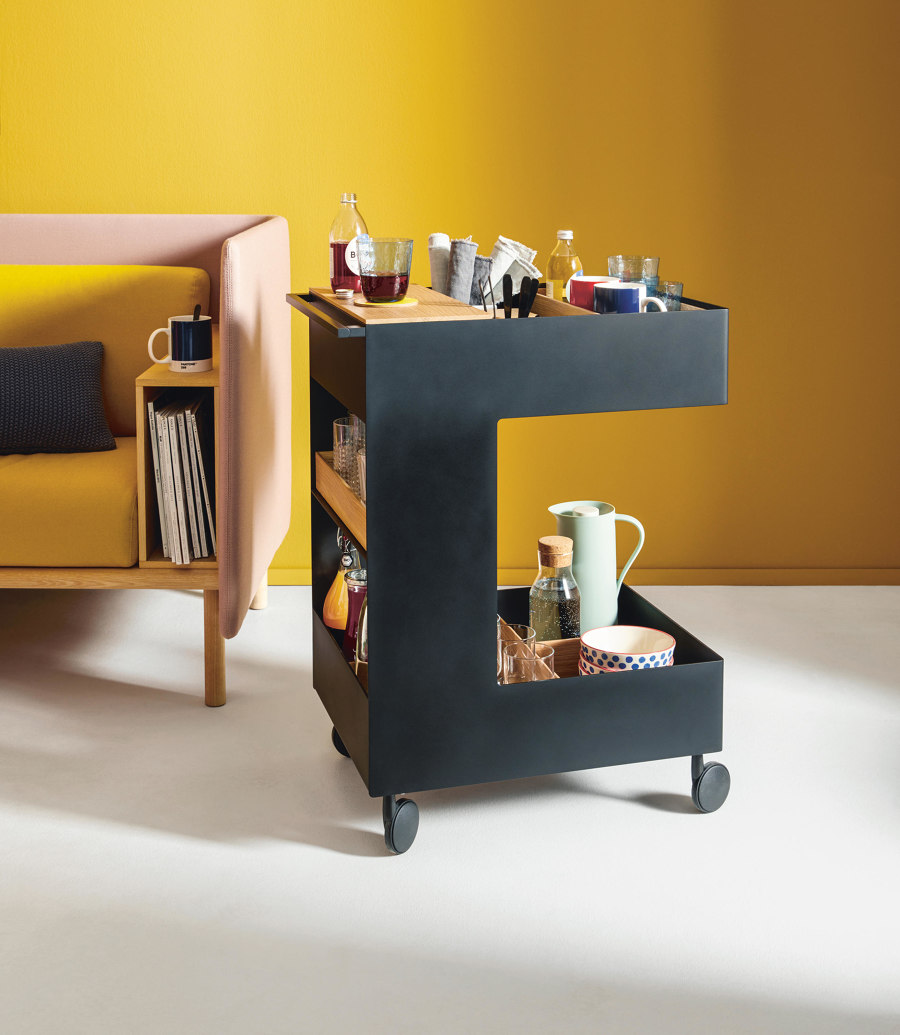
next125’s next125 Trolley can be loaded up with the bare essentials for any mealtime typology and whisked away to wherever the party is. If kept empty, meanwhile, it makes light work of tidying up
×On your trolley: portable kitchen storage
Dual-sided partition storage makes it simple to transfer essentials to the dining space, but what if the dining space moves? The multi-functionality of products and spaces in the modern home means diners often have a choice of location, with breakfast rooms, sun rooms and even outdoor terraces preferred for different meal typologies.
Instead of keeping tabletop essentials such as cutlery, napkins and favoured condiments stationary, a full-loaded portable serving trolley such as next125’s next125 Trolley transports them all at once. Alternatively, the transport can be kept free to tidy away used crockery and glassware from different dining areas in one trip.
© Architonic


